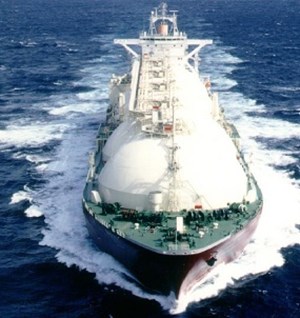IEA: natural gas markets remain “uncertain” amidst Russian actions and fluctuating energy prices
(WO) – According to the International Energy Agency’s Gas Market Report, natural gas markets worldwide continued to tighten last year despite global consumption declining by an estimated 1.6% in 2022. Demand is forecast to remain flat in 2023, but the outlook is subject to a high level of uncertainty, particularly in terms of Russia’s future actions and the economic impacts of fluctuating energy prices.
Unprecedented price rises led to a 13% reduction in Europe’s gas demand as governments responded swiftly with emergency policies, industry scaled back production, and consumers dialed down thermostats. Milder winter weather conditions also helped reduce space heating needs. Gas demand in Asia dropped by 2% because of high liquefied natural gas (LNG) prices, Covid-related disruptions in China and consistently mild weather in Northeast Asia.
LNG was a particularly dynamic area in 2022 as the value of global trade hit an all-time-high, doubling to $450 billion. Traded volumes increased by 6%, slightly slower than 2021, once again highlighting the distortive impacts that sharp rises in energy prices have had on global economic activity. Europe was the primary driver behind the increase in LNG demand as it pivoted away from Russian pipeline. LNG cargoes delivered to Europe increased by 63% last year.
Natural gas prices, although still high by historical standards, have fallen in recent months. However, that could change in 2023 as demand for LNG picks up in Asia, particularly in China. As the world’s largest importer of natural gas, the country recently lifted its Covid restrictions, which stifled domestic demand throughout last year.
China’s domestic LNG demand could increase by 10% in 2023, but current forecasts are highly uncertain. In a bullish scenario, China’s renewed demand growth may be as high as 35% if prices continue to fall and general economic activity recovers swiftly. This would spark fierce competition in international markets and could see prices return to the unsustainable levels seen last summer, representing a concern for European buyers in particular.
Despite the growth in global LNG demand in 2022, the 5.5% increase in supply was relatively modest. Maintenance at large liquefaction ports and a longer-than-expected outage at Freeport in the United States, one of the largest LNG terminals in the world, contributed to this. Moreover, high market prices were not enough to stimulate significant investment in new terminals.
Investment activity was slow due to rising construction costs and ongoing contract renegotiations throughout the year. This was compounded by a continued reluctance among potential buyers, with the exception of China, to commit to new LNG contracts in the face of long-term demand uncertainty, elevated pricing and decarbonization objectives.
However, many pre-investment projects – including several developments in North America as well as Qatar’s North Field South expansion – made significant progress towards a final decision, leaving the door open to a strong year in 2023.
European natural gas prices and Asian spot LNG prices spiked to record highs late last year. In Europe, this was due to offsetting the sharp falls in Russian gas supplies through LNG imports. China’s gas consumption decreased by 1% in 2022 because of lower growth in economic and especially industrial activity, Covid-related restrictions and high prices.
Japan was once again the world's largest LNG importer, despite a modest 3% drop in LNG inflows in 2022. Preliminary data indicates a 4.4% rise in natural gas consumption in North America last year. This increase is primarily attributed to substantial consumption growth in the US power generation sector, as well as the expansion in Canadian consumption reported by both power generators and industrial consumers.
For other regions, the current crisis casts longer-term uncertainty on the prospects for natural gas, especially in developing markets where consumption was expected to rise with the aims of helping to support industrial development and of displacing in part the use of more polluting fu



